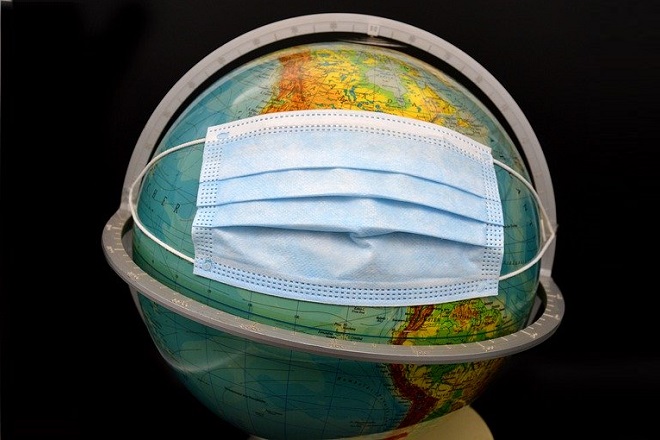As the planet grapples with the COVID-19 pandemic, the UN urges the world not to forget about maternal deaths.
The UNFPA (the UN agency that focuses on reproductive and maternal health) appealed in December 2020 for $2.5 billion by 2030 to prevent pregnancy and maternal deaths.
As everyone is busy exploring the effects of the pandemic and looking for ways to stop the virus, the world seems to forget that many other issues affect the planet, and one of them is the high number of maternal deaths in developing countries. The UNFPA announced that the next stage in their Supplies Partnership is to get maternal health medicines and contraception for adolescent girls and women over the following 10 years.
Dr. Natalia Kanem, the UNFPA Director stated that it’s the moment for the global community to support their communities and provide girls and women from developing countries with the help they need to prevent unwanted pregnancies and maternal deaths. If we fail to do it, we must be ready to face terrible consequences like unintended pregnancies, unsafe abortions, and women dying from conditions related to pregnancy and childbirth.
If the UN agency makes the intended investment of $2.5 billion in the following 10 years, it can prevent 141 million unwanted pregnancies, over 300.000 maternal deaths, and 42 million dangerous abortions.
How did the COVID-19 impact the ongoing fight with maternal deaths?
Even if health specialists tried to mitigate the pandemic’s effect on other health issues that affect the planet, coronavirus slowed and even reversed decades of progress in many health areas. Family planning is one field that suffered the most during the pandemic because of the restrictions imposed (lockdowns, lack of medicine) and stress caused by the fear of contracting the virus. Fewer women have sought reproductive health services and therefore the number of unwanted pregnancies and unsafe abortions grew spiraling.
But now that the world seems to take charge, it’s time to focus again on women’s health and wellbeing, especially now that this category is vulnerable because of the pandemic.
Where do maternal deaths occur?
Even if maternal death is a global issue, some areas register a higher number of cases, and this reflects the inequalities in access to proper health opportunities and the gap between developed and developing countries. The maternal mortality ratio in low-income areas in 2017 was 462 per 100.000 live births and 11 per 100.000 live births in developed states. In 2017, the Fragile States Index listed 15 countries with very high MMR (Ethiopia, Nigeria, Haiti, Zimbabwe, Afghanistan, Guinea, Iran, the Democratic Republic of Congo, Syria, Yemen, Somalia, Sudan, Central African Republic, and South Sudan). The stats reveal that the risk of maternal mortality is increased for young women under 15 years old for pregnancy issues, and girls aged 10-19 for childbirth.
Women in low income states have more pregnancies than the ones from developed areas, and therefore their risk of death because of abortion or pregnancy is higher. In 2017, around 300.000 women died during or because of pregnancies and childbirth. In the last 20 years the worldwide MMR decreased by 38%, but many developing areas still have extremely high rates and as a result of the pandemic it’s likely the numbers to spike.
In over 75% of maternal fatalities, the leading factors are severe bleeding (bleeding after childbirth), infections (after childbirth) high blood pressure during pregnancy (eclampsia and preeclampsia), complications during delivery, and unsafe abortion. These complications develop during pregnancies and are treatable and preventable if the women benefit from basic healthcare assistance. Sometimes, complications can exist before pregnancy and worsen as the fetus grows, especially when the women don’t know about their existence and don’t benefit from reproductive health support. Chronic diseases like diabetes and cardiac disease also trigger maternal deaths when mothers-to-be leave these untreated or undiagnosed conditions.
How can we save these women’s lives?
Maternal fatalities are preventable because there are plenty of ways to prevent and manage the medical complications that cause them. Everyone needs access to high-quality health care services, and women in developing countries need them the most. Newborn health and maternal health are connected and it’s paramount for trained health experts to attend all pregnancies and births. Knowledge can save lives, and therefore it starts with providing people with tutoring and education. Treatment and health management can make the difference for mothers and babies at risk to experience health issues and even death because they live in low-income areas where they have no access to treatment solutions.
Severe bleeding can kill a healthy individual within hours when unattended, so just imagine how devastating it is for a woman bleeding after birth who doesn’t get medical support. But when she gets oxytocics injected after childbirth, the risk of bleeding decreases, and she is out of risk.
Infections can also be prevented and eliminated when women practice good hygiene and identify the early symptoms of the condition and treat it accordingly.
A doctor can detect preeclampsia and prevent it before the symptoms and convulsions appear, and trigger life-threatening complications. Getting drugs like magnesium sulfate can prevent pregnant women from developing the issue.
It’s also vital to prevent unwanted pregnancies to avoid deaths. The simplest way to stop it is to provide all women, including adolescents, with contraception, safe abortion solutions, and quality post-abortion care.
States and organizations worldwide are making bold commitments to support programs that help women in developing countries. Canada, Australia, Denmark, Germany, the European Union, Norway, Spain, Netherlands, Luxembourg, and the United Kingdom are only some of the countries that participate in this program. Through this program, poor women in remote zones can receive adequate health care and assistance from experienced health workers. To improve maternal health, we must remove barriers like poverty, cultural practices and beliefs, poor or inadequate quality services, lack of information, distances to facilities, and poverty. In the given context, countries need to stay united to achieve the goal and boost the decline of maternal mortality in the following 10 years.





